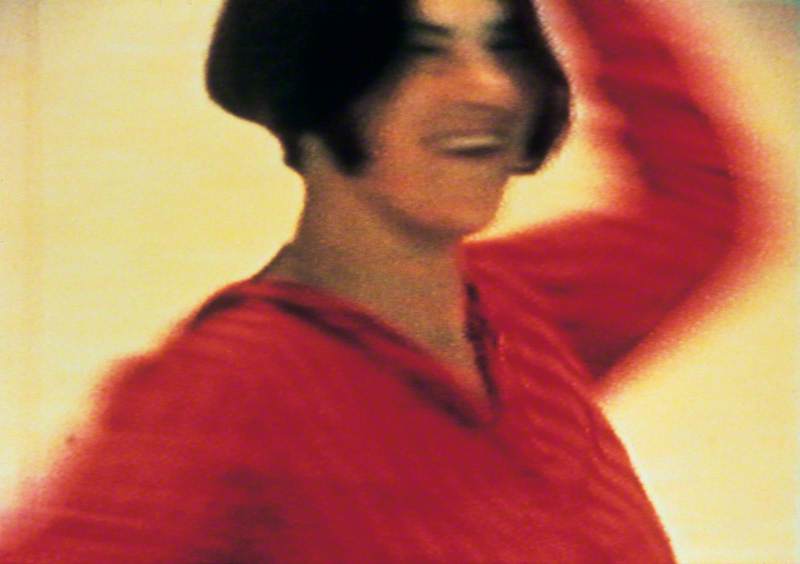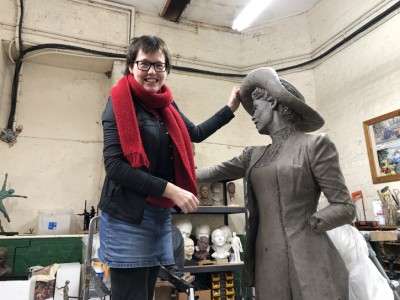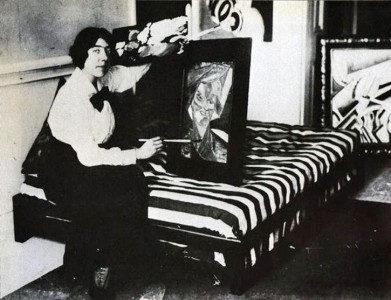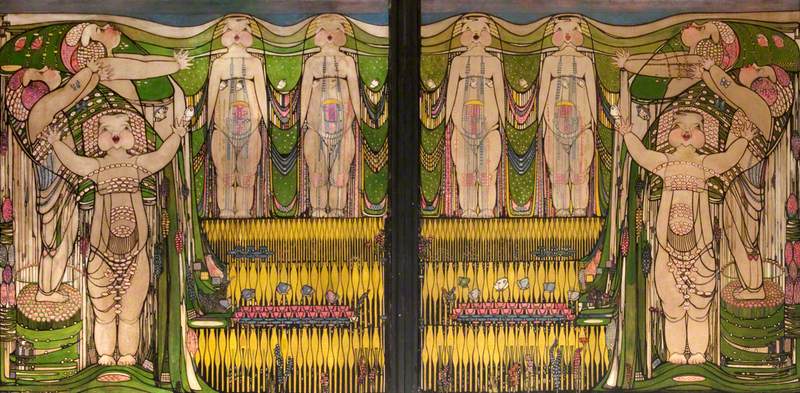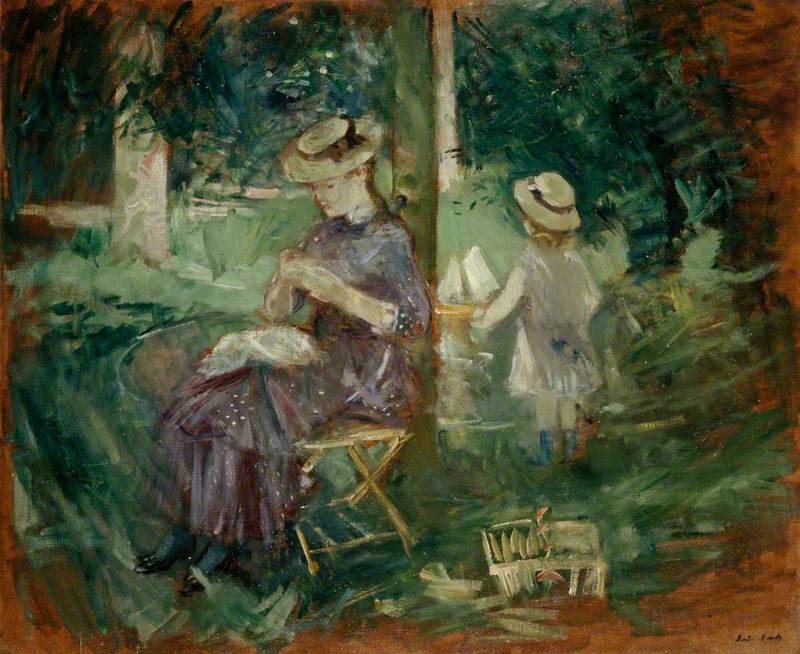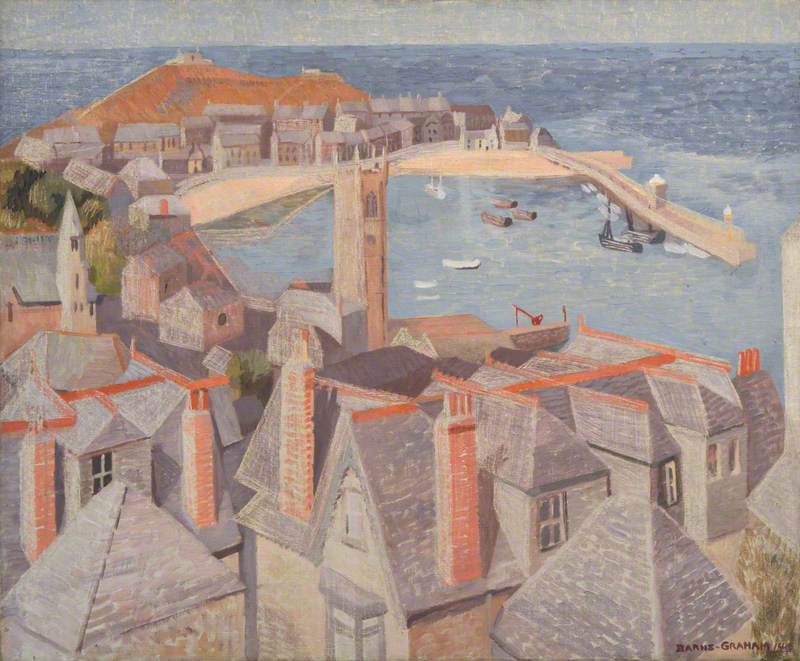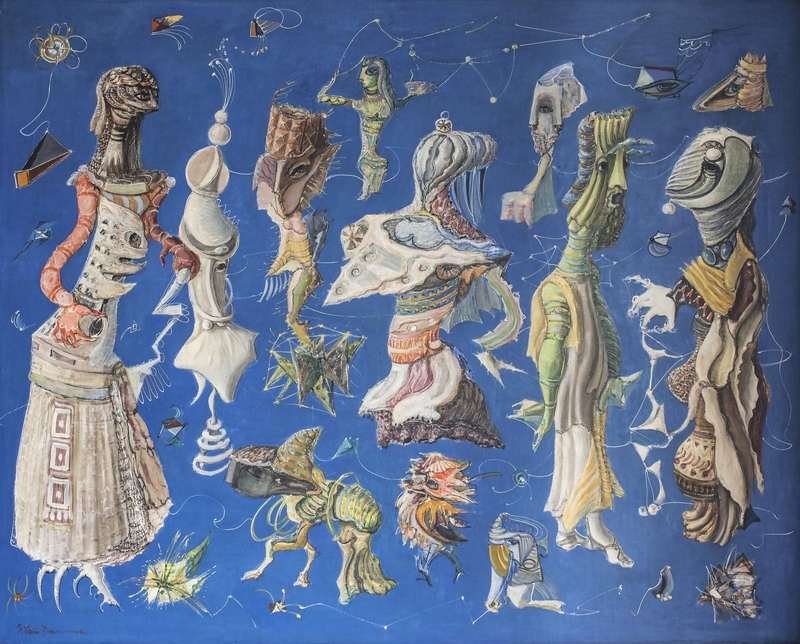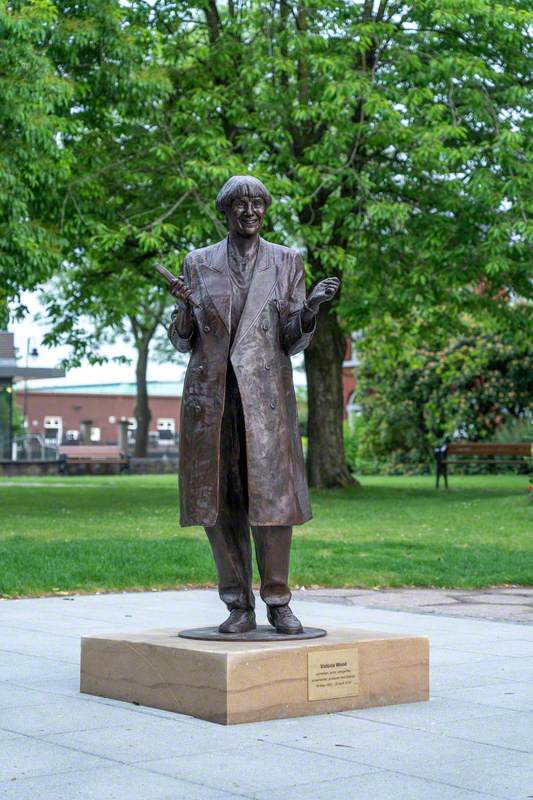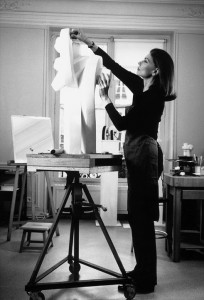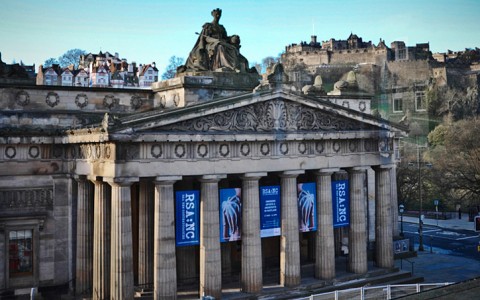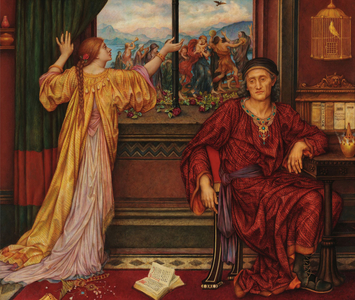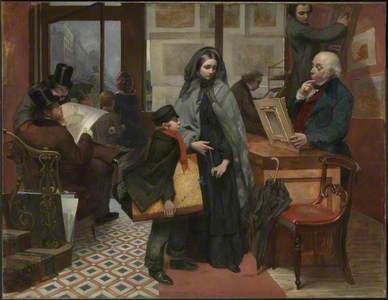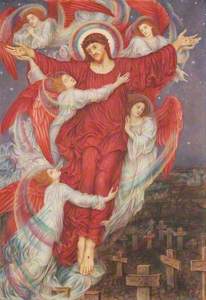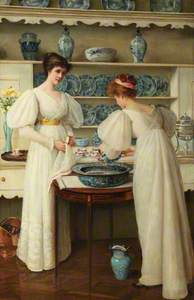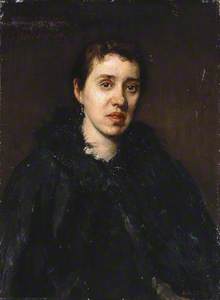Looking back from 2022, it seems obvious that any woman working as a professional artist in Victorian England would be keen to have the right to vote. Since they earned income to support themselves and fought to be successful in a field dominated by men, wouldn't they see the clear need for a political voice?
But the complexities facing women artists working in the late nineteenth century – as they sought recognition and fulfilment as artists – precluded many of them from vocalising political convictions. The reasons for this are varied and layered. Chief among them is the desire by women to compete on equal terms with men, and therefore not to constantly distinguish themselves from their male peers by voicing the need for equality. The most successful women artists in this period, for example, rarely exhibited with women's groups or societies, preferring to seek inclusion in non-gender-specific exhibition spaces like the Royal Academy.
We often think of art vandalism by suffragettes when we think of art and women's suffrage in Britain, but there were many ways to publicly or privately support the campaign for women's right to vote. One of them was signing the Declaration in Favour of Women's Suffrage in 1889. This document organised its signatories by social rank and by profession, so there is a section for 'Artists and Musicians'.
The document is a fascinating record of a select few who self-identified as artists by profession and who also publicly aligned themselves with the cause of women's suffrage. The year 1889 was 29 years before property-owning women over the age of 30 were granted the right to vote in 1918, and 39 years before they gained equal voting rights with men in 1928. This document is a snapshot of a particular moment in time, before the campaign for women's suffrage reached its zenith of political disruption and destruction in the early twentieth century. Yet that makes it no less important a document in the story of the decades-long campaign for universal suffrage in Britain.
The five artists discussed below, who added their names to the Declaration, were all professionally successful and well known in the Victorian art scene. Their public support of women's suffrage was significant for this reason, and also because, as women with independent incomes and property, they would have qualified to vote had they been men. These artists are rarely discussed together, because their styles and careers diverged significantly. Bringing them together here highlights their political convictions and offers an interesting chance to compare very different strands of Victorian art.
Emily Mary Osborn
Emily Mary Osborn was born in 1828. She was part of a generation of women in England who had little access to any sort of formal education in art schools, as none of the significant ones had yet begun accepting women. Osborn briefly studied privately before working professionally. She regularly exhibited at the Royal Academy and counted Queen Victoria as one of her patrons. She was part of the circle of artists orbiting around artist Barbara Bodichon, whose portrait Osborn painted and gifted to Girton College, the first Cambridge college to admit women.
Osborn's most famous work – and perhaps the work most associated with the fight for women's rights in London in the nineteenth century – is Nameless and Friendless. The painting depicts a widowed woman trying to sell a painting to a dealer in London while two men leer at her in the background.
Nameless and Friendless. "The rich man's wealth is his strong city, etc." - Proverbs, x, 15
1857
Emily Mary Osborn (1828–1925) 
The social complexities of middle-class women entering public urban spaces, striving to make ends meet, and navigating rapidly changing sexual dynamics are captured with nuance by Osborn. The painting epitomises the tradition of Victorian narrative painting, which was Osborn's strength.
In the decades after 1870, when this style began to fall out of fashion, Osborn shifted her focus to flower painting and landscapes. Her fame diminished, but she remained able to support herself through her art. She was a member of the Society of Female Artists, and by the time she added her signature to the 1889 Declaration in Favour of Women's Suffrage, she would have been one of the elder stateswomen of the London art world signatories.
Evelyn De Morgan
Evelyn De Morgan was born Mary Evelyn Pickering in 1855 to an upper-class family. She began her pursuit of art as a child, and fought hard for her parents' support to attend art school. She enrolled at the Slade School of Art soon after it opened as the first mixed-gender school of fine art in Britain.
Evelyn De Morgan
De Morgan chose to paint under the name Evelyn, her middle name, because of its androgyny. She met her husband, ceramicist William De Morgan, in 1883, and married him four years later in 1887. Though Evelyn had always been a fierce believer in political causes, her partnership with her husband enabled her to be especially vocal about her beliefs. William De Morgan was a prominent supporter of women's suffrage, as well as an outspoken pacifist and spiritualist.
Both De Morgans, but especially Evelyn, used their art to express their political convictions. Evelyn's epic allegorical compositions of women, such as Demeter Mourning for Persephone, convey a deep and complex emotionality.
During the First World War, Evelyn painted explicitly anti-war compositions, like an allegorical image of Christ rising over a Belgian cemetery filled with endless graves of war dead.
Over the course of her career, Evelyn was associated with Pre-Raphaelitism, Symbolism and Aestheticism. During the first decades of her marriage, income from sales of her paintings supported her household while her husband's ceramics struggled to find a market. Eventually, he became a successful novelist and book sales made their lives more financially secure, but not before Evelyn had established herself as a successful, marketable and independent professional artist.
Louise Jopling
Louise Jopling was a remarkably prolific painter. Born in Manchester in 1843, she was married three times and was incredibly socially adept. Her second husband, Joseph Jopling, was an artist for Vanity Fair and well connected with London's art world.
Louise Jane Jopling
(née Goode, later Rowe) 1879
John Everett Millais (1829–1896) 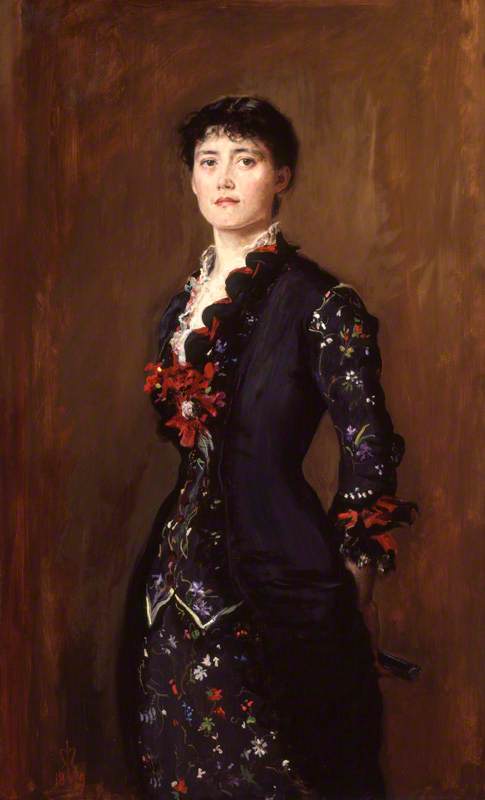
Louise's career was far more successful than her husband's, and she became the breadwinner of the family, something which she found stressful. She was a society portraitist and had to maintain a stylish lifestyle in order to run in the right circles in the pursuit of lucrative commissions.
The oft-cited statement that women have to work twice as hard for half the gains compared to men is apt in the case of Louise's career. She often painted dozens of oil compositions a year, was regularly paid significantly less for commissions than her male competitors, and exhibited with both women-only exhibiting bodies – including the Society of Women Artists – and mixed-gender spaces, such as the Royal Academy and the Royal Society of British Artists, of which she and Lucy Kemp-Welch shared the honour of being the first women admitted in 1901.
Jopling's respectability and stylish, conventional paintings have made her less memorable than other women artists who pursued more radical artistic styles. But her commitment to finding success and inclusion in the upper echelons of London's cultural milieu makes her fascinating.
This is particularly intriguing in the context of her public support of women's suffrage, as well as the Healthy and Artistic Dress Union, which supported the reform of fashion dictates, particularly in regard to women's undergarments. She continued to prioritise her political convictions alongside her embrace of upper-middle-class respectability throughout her long career.
Susan Isabel Dacre
Susan Isabel Dacre was born in Warwickshire in 1844 and spent time abroad as a young woman before returning to England to study art at the Manchester School of Art. Though she lived in London in the 1870s and 1880s, she spent most of her life in Manchester. She exhibited at the New English Art Club and the Paris Salon, and was closely involved in Manchester's art world, including the Manchester Academy of Fine Art.
While a student at the Manchester School of Art, she met fellow student Annie Swynnerton. The two women travelled extensively through Italy between 1874 and 1910.
Dacre never married and successfully supported herself through her artistic career. She and Swynnerton founded the Manchester Society for Women Painters in 1879, which they ran until 1883 when it disbanded. The society had exhibitions each year of its existence, and in 1880 it made a donation to the Manchester Society for Women's Suffrage.
Dacre grounded her advocacy for women's suffrage in her own contributions to the nation as an independent professional, noting that she owned property and paid taxes on her income: she met all requirements for suffrage at the time, except for being male. Dacre painted a portrait of Lydia Becker, the president of the Manchester Society for Women's Suffrage, during this period.
Annie Swynnerton
Dacre's close friend Annie Louisa Robinson Swynnerton was also born in 1844. She grew up in Manchester, though she left the city in 1879 to divide her time between London and Rome. Swynnerton's connection with Italy was foundational to her visual language, which evolved throughout her career into an epic, Symbolist form of expression.
Annie Swynnerton was the first woman since Angelica Kauffman to be elected an Associate Royal Academician in 1922, though the honour was rescinded several days later when the Academy realised that, at 78, she had technically exceeded the age limit for new members. Though the situation was disappointing and embarrassing for both parties, Swynnerton retained the honour of having been the first to receive the award in over a century, and was referred to as an ARA (Associate of the Royal Academy) at the time of her death.
Swynnerton's founding involvement with the Manchester Society for Women Painters, alongside Dacre, underlines her convictions in support of women's rights, as does her creation of a portrait of prominent suffragist Dame Millicent Fawcett, the leader of the National Union of Women's Suffrage Societies and the co-founder of Newnham College, Cambridge.
As Swynnerton's career progressed, she, like many successful women artists, focused her energies on exhibiting in mainstream, mixed-sex spaces in order to be judged as much as possible as an artist, rather than only as a woman artist. But her work continued to foreground chiefly female figures in both traditional portraiture and mythical or fantastical compositions.
These five women were members of different generations, social circles and artistic movements, but they all shared a deep interest in the cause of advancing women's rights. All five signed with the security of relative professional success and financial independence. Yet many of the women artists who were part of the various societies founded to elevate women's status in the art world – like the aforementioned Society of Female Artists or the Manchester Society for Women Painters – chose not to sign the Declaration.
The reasons include that women who were not well connected to London society might not have been aware of its existence before its publication. Some outspoken advocates for women's rights, like Emily Mary Osborn's friend Barbara Bodichon, don't appear on the list for unknown reasons. Another reason not to sign was the potential impact on nascent careers. The five women discussed here never made a secret of their politics and succeeded anyway, but many women found it easier or safer not to rock the boat.
Some women artists even publicly advocated against women's suffrage, like Laura Theresa Alma-Tadema, wife of prominent artist Lawrence Alma-Tadema. She signed 'An Appeal Against Women's Suffrage', published in response to the Declaration in 1889.
It is not possible to generalise the reasons behind these women's public political decisions. But it is clear that the women who spoke out in favour of women's suffrage did so with the knowledge that their actions would not cultivate universal praise. The five discussed here demonstrate just how varied were the lives and artwork of artists who supported women's suffrage.
Eliza Goodpasture, writer and art historian
Enjoyed this story? Get all the latest Art UK stories sent directly to your inbox when you sign up for our newsletter.
Further reading
Whitney Chadwick, Women, Art, and Society, Thames & Hudson, 2002
Deborah Cherry, Painting Women: Victorian Women Artists, Routledge, 1993
Sheila Jeffreys, The Spinster and Her Enemies: Feminism and Sexuality, 1880–1930, Spinifex Press, 1997
Philippa Levine, Feminist Lives in Victorian England: Private Roles and Public Commitment, Figueroa Press, 2004

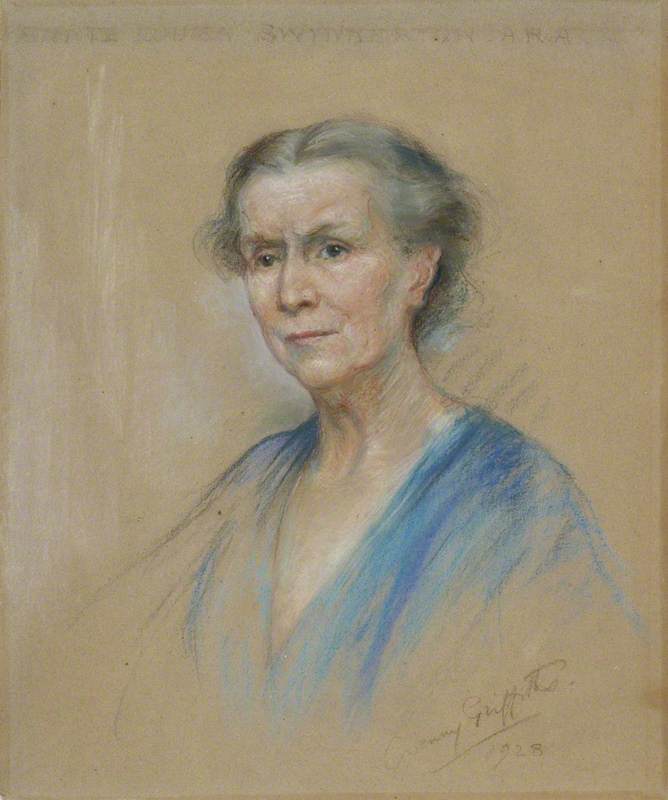
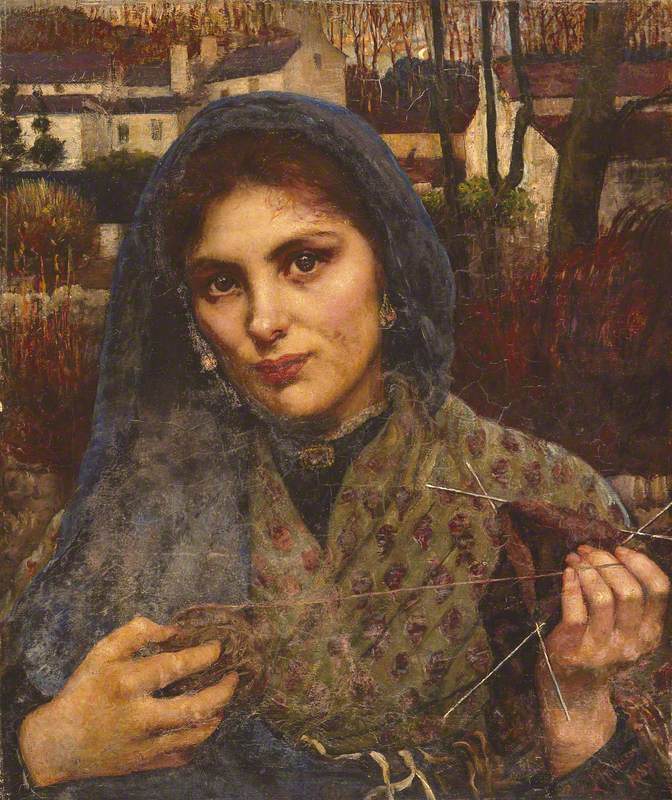
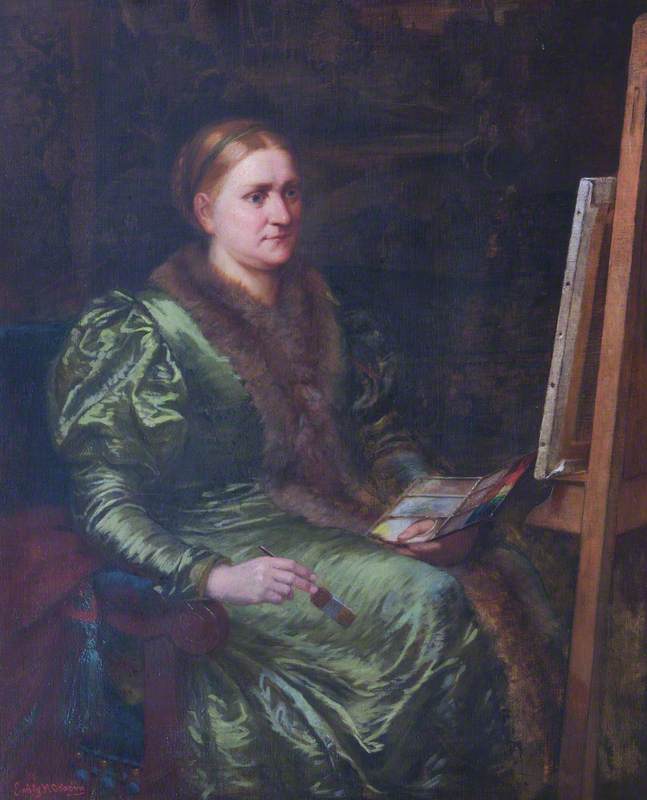
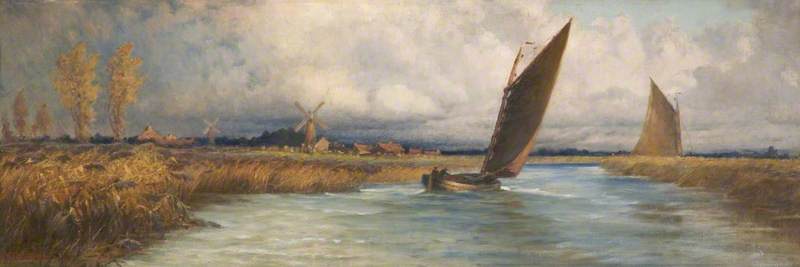
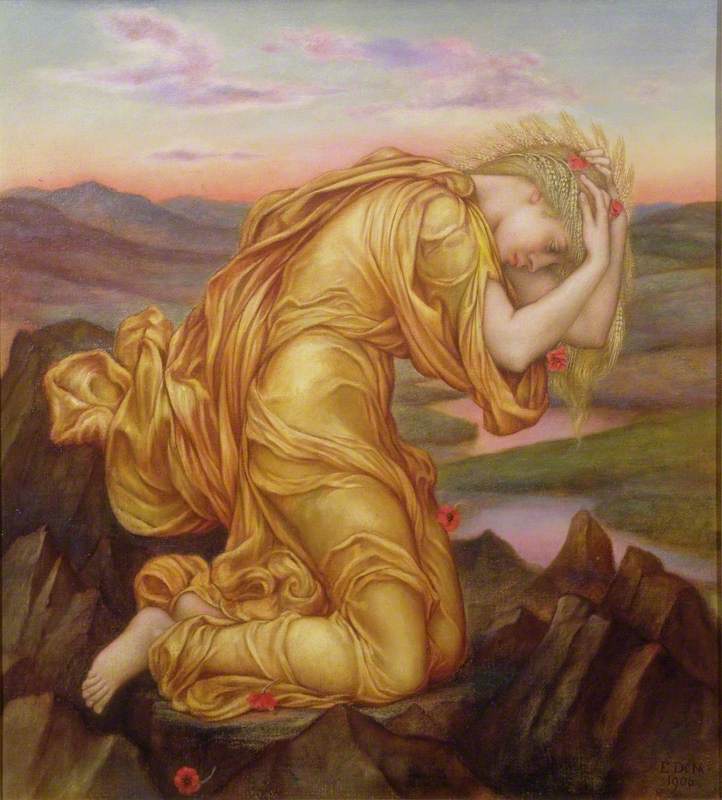


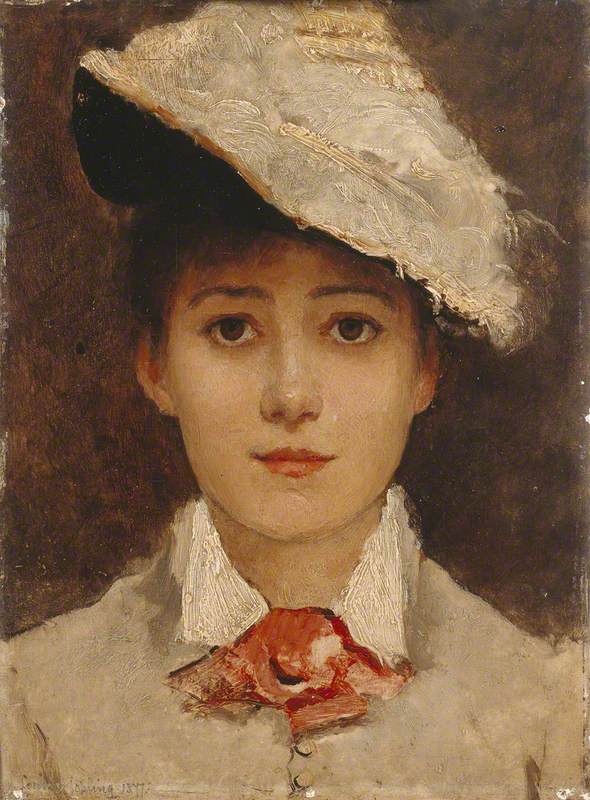
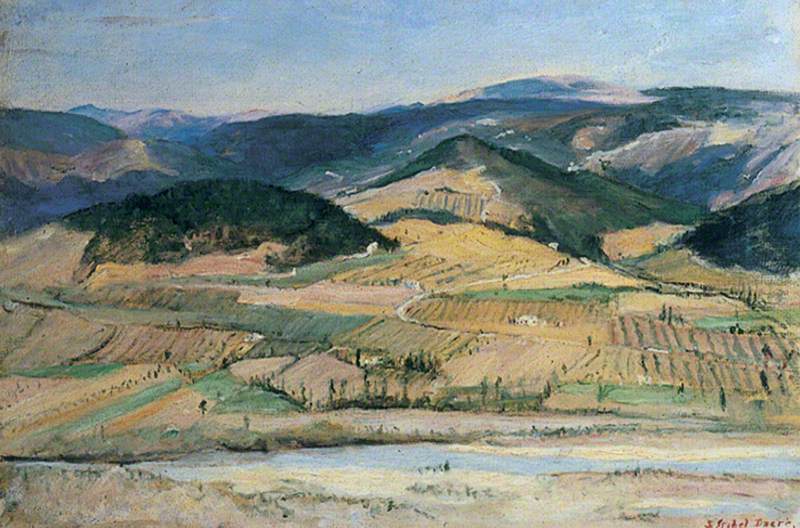

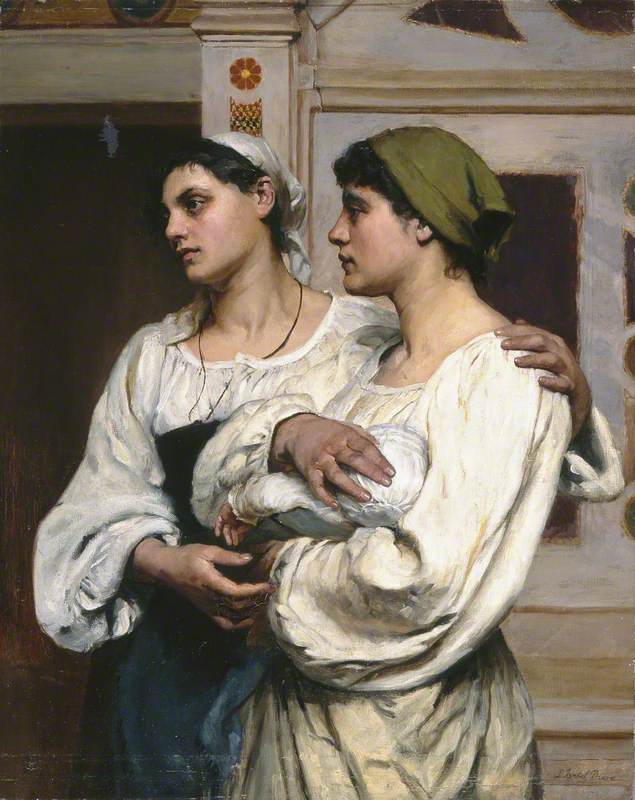
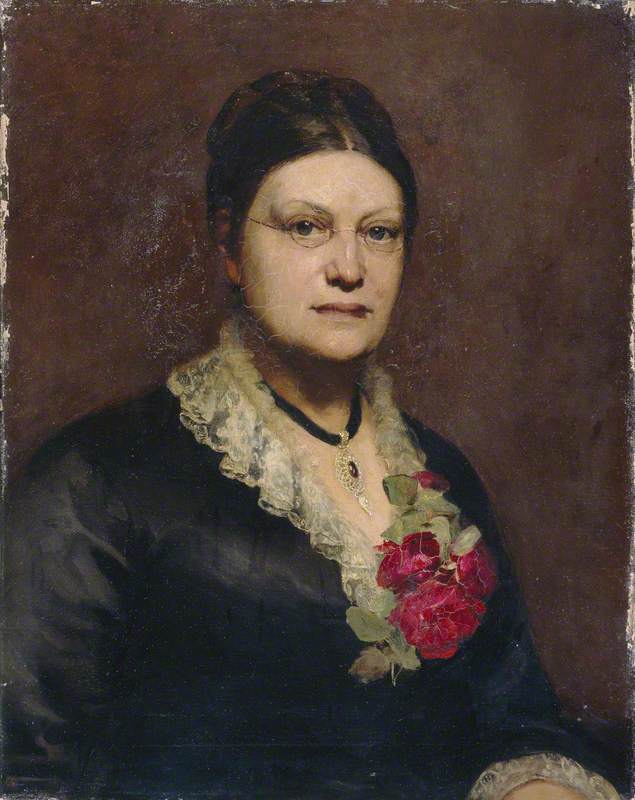


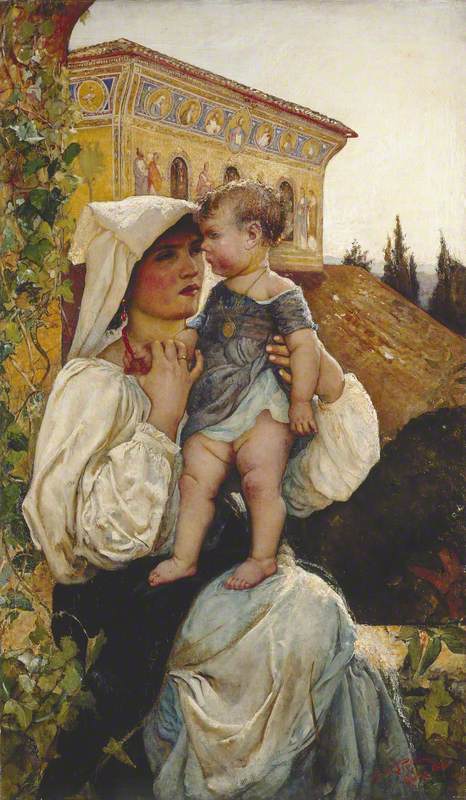
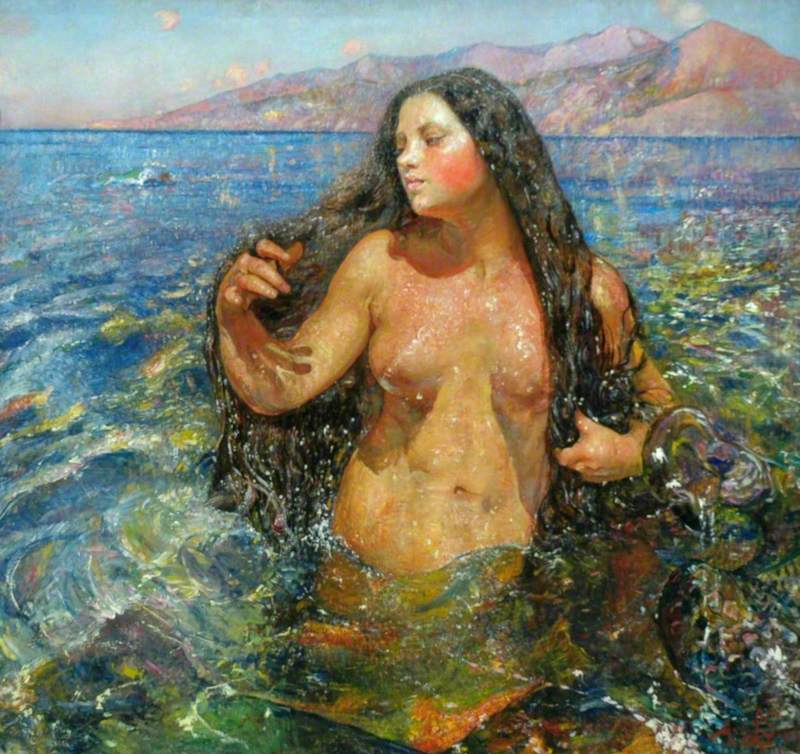
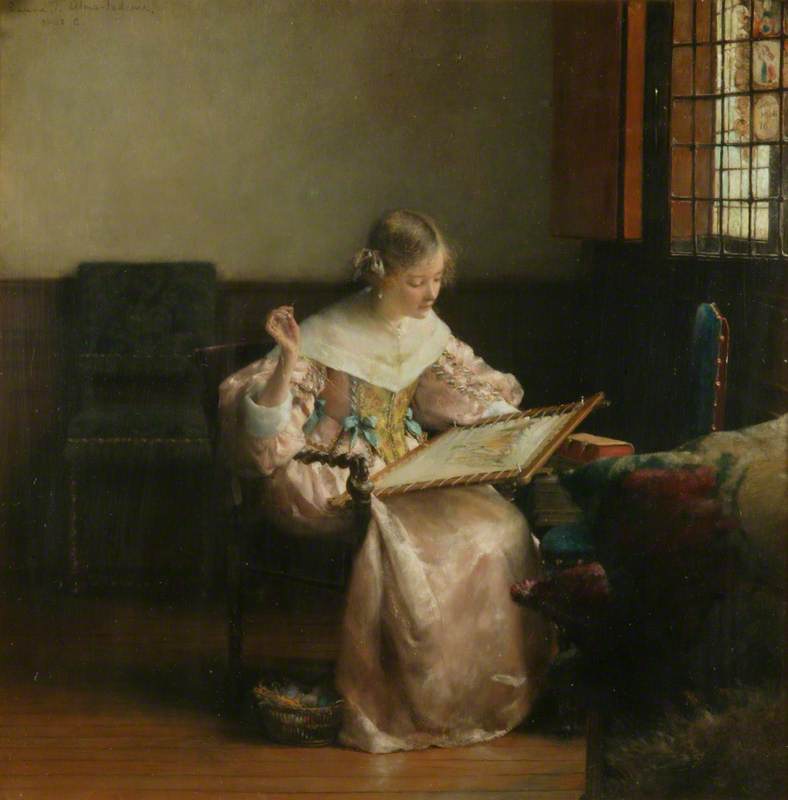


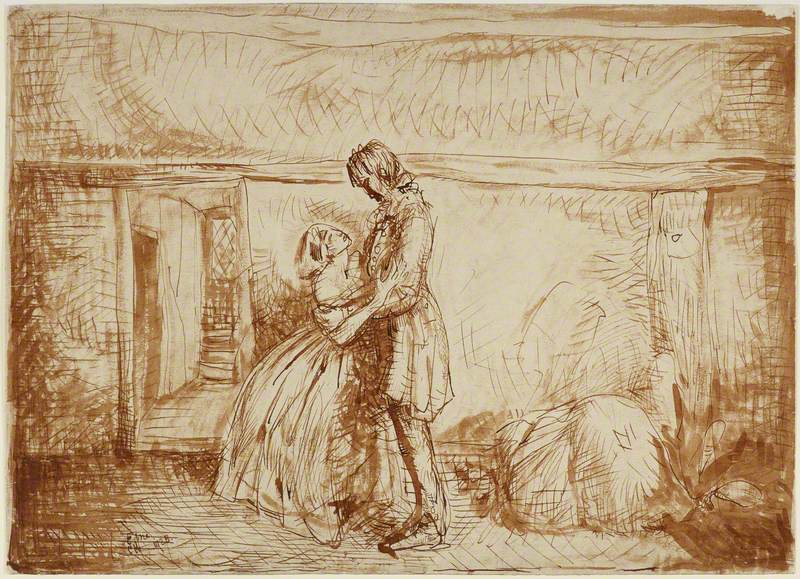
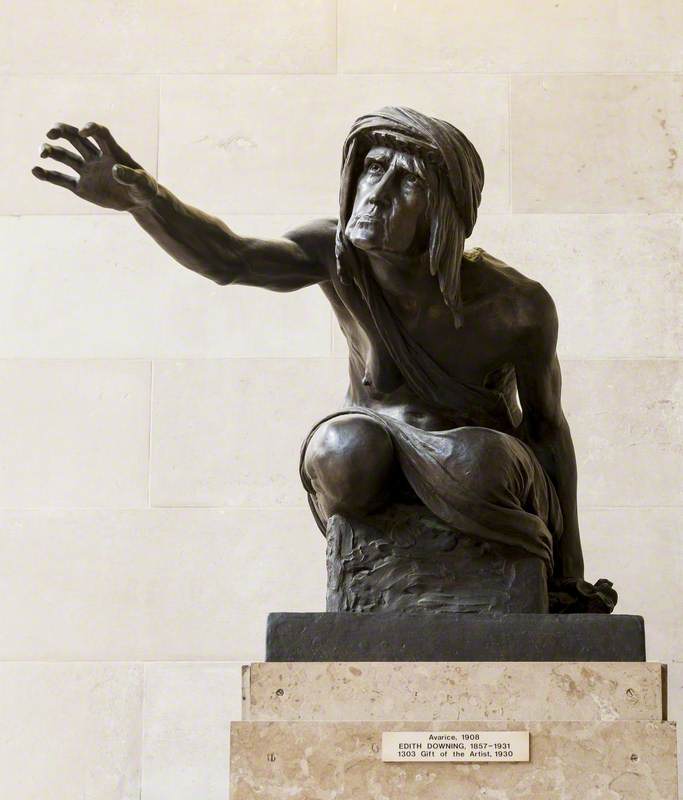
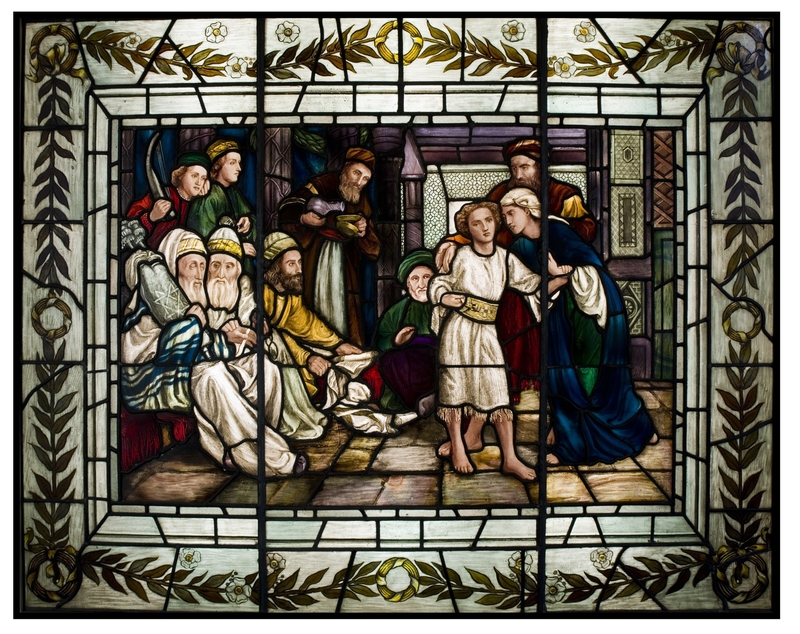
.jpg)
